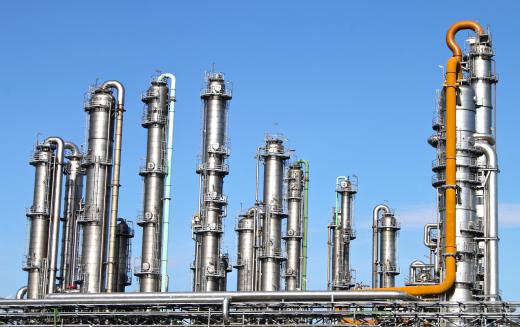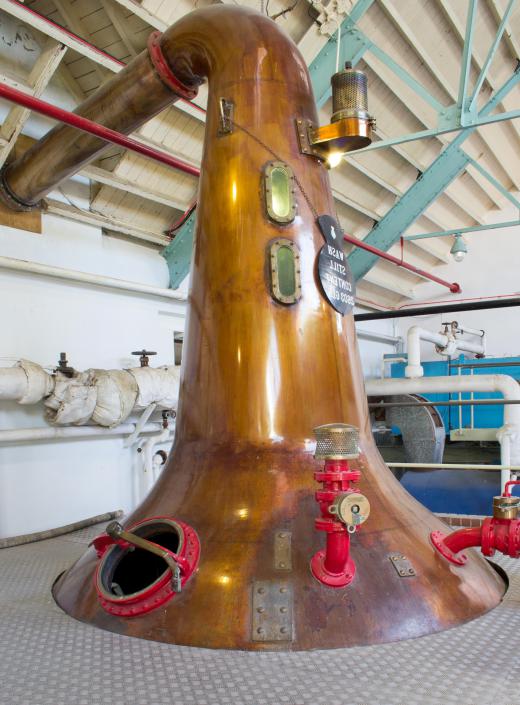Distillation is a general term that describes a group of specific methods that use heat to separate mixtures. The two main types are simple and fractional. What can make this confusing is that some people incorrectly call simple distillation just "distillation." The two types use much of the same equipment and principles to separate mixtures, but the fractional method also uses a fractionating column. Fractional distillation is used when the boiling points of chemicals in a mixture are close to each-other, while the simple method is generally used when the boiling points are significantly different.
In simple distillation, a mixture containing chemicals with different boiling points is heated to a gentle boil. The chemical, now in gaseous form, travels upward and then over into a cooled tube called a condenser, where it becomes a liquid again. The condenser is angled slightly downward, and a purer version of the desired chemical empties into a receiving vessel at the bottom.

Fractional distillation is used when the boiling points of chemicals in a mixture are close to each-other, usually within 77°F (25°C). In this method, heat is added to the mixture until it begins to boil. The gas, usually purer than the mixture but still containing all of the chemicals, then travels up into a fractionating column. The fractionating column blocks the gas from directly rising by putting a large amount of surface area in its way, either by using a series of trays or plates, or by filling the entire column with packing material. The rising gas then condenses on the trays or other materials and becomes a liquid. The rising gases from below, however, heat this liquid again, causing it to distill again, and an even purer gas travels up to the next level of the column. Eventually, the gas makes it out of the fractionating column, is cooled to liquid, and empties into a receiving vessel.

In a laboratory setting, the two methods use much of the same equipment. The flasks, vessels, thermometers, condensers, clamps, adapters and even heating methods are interchangeable between the two. In fractional distillation, however, a fractionating column is set up between where the mixture is boiled (in a distilling flask) and the condenser, taking the place of the three-way adapter usually used.
